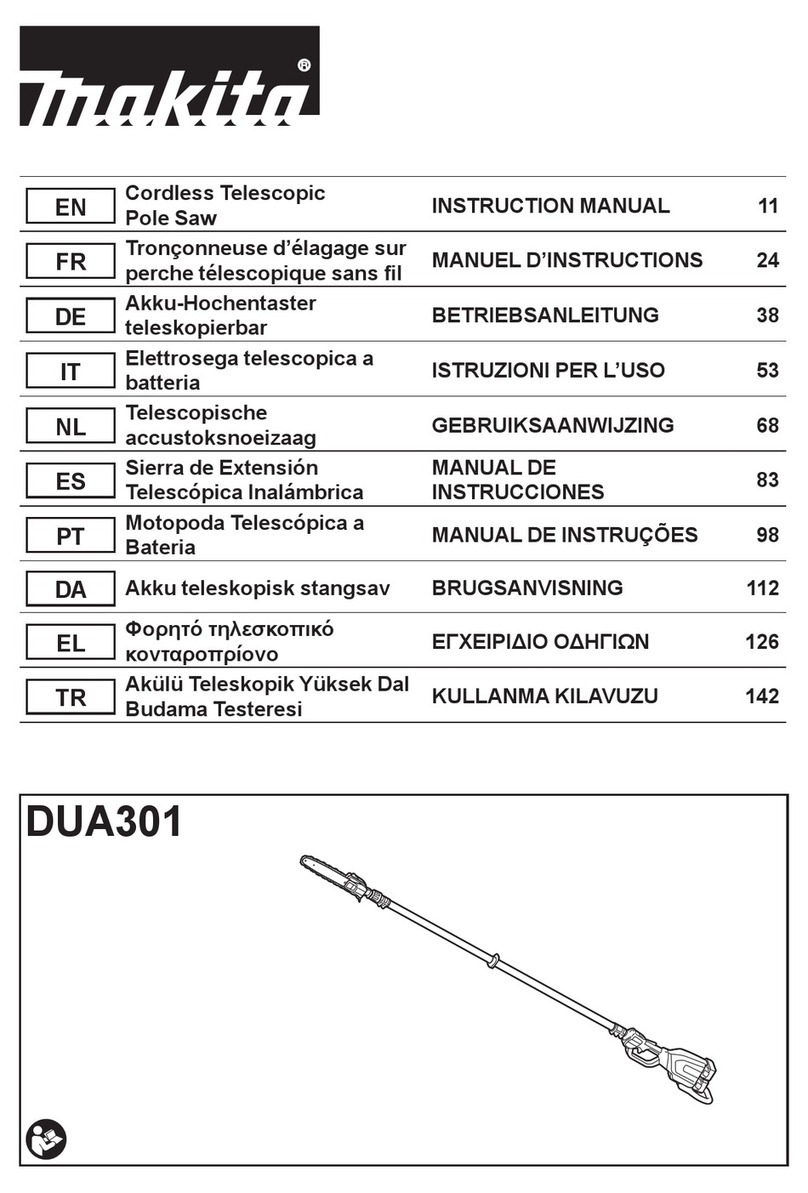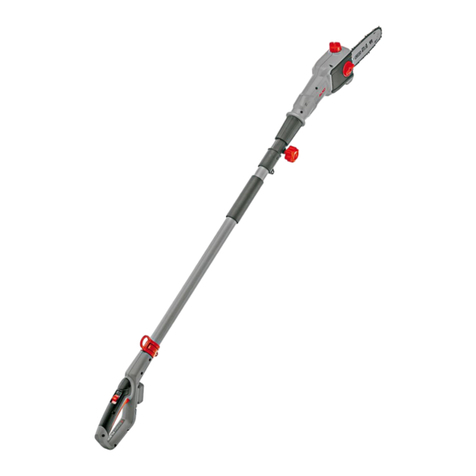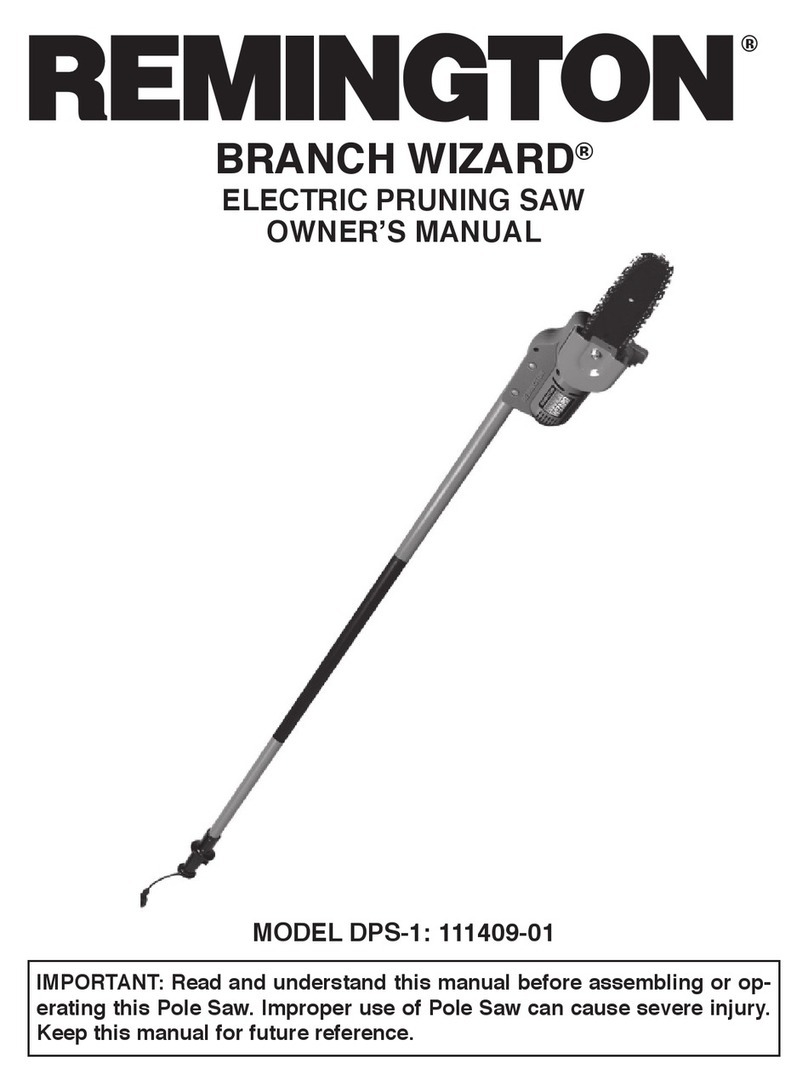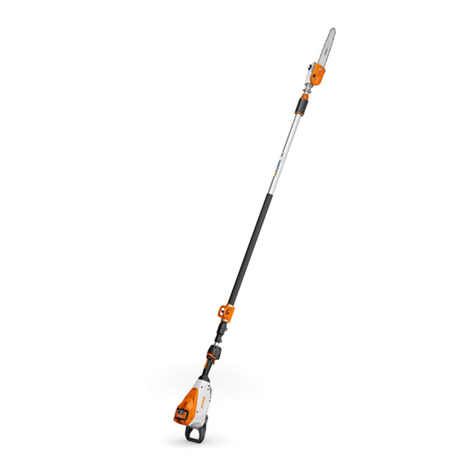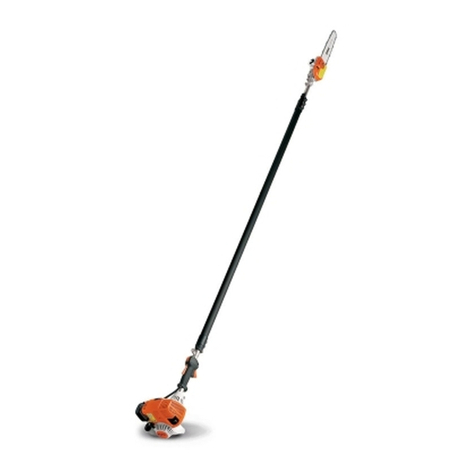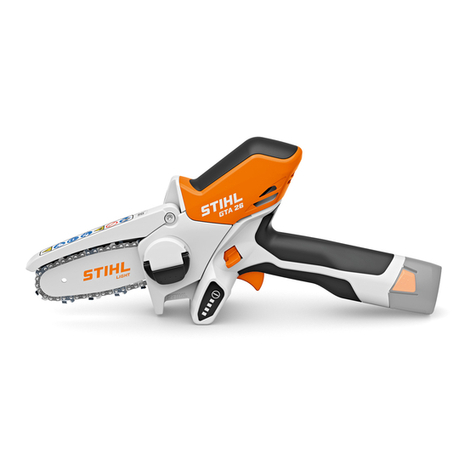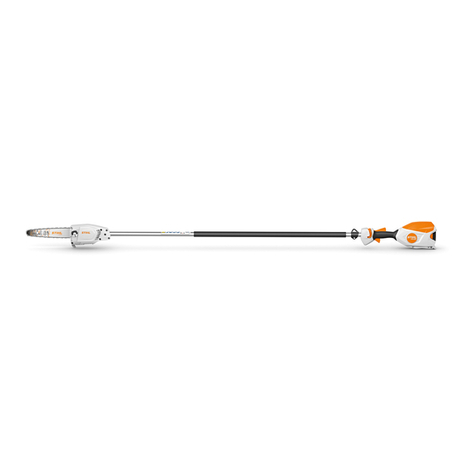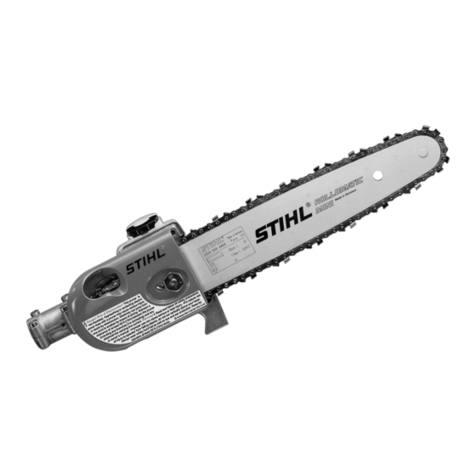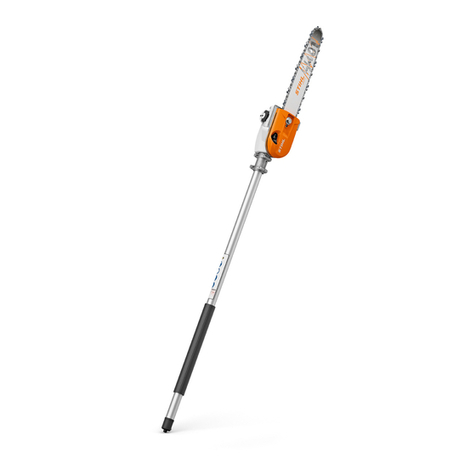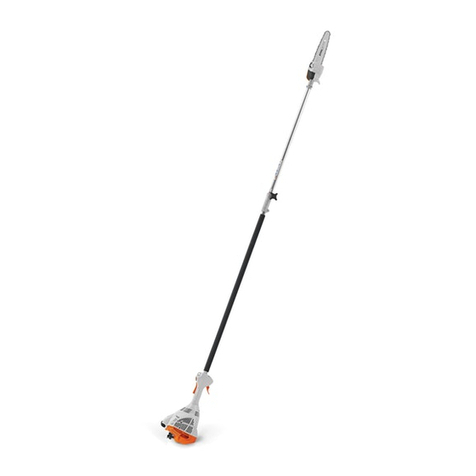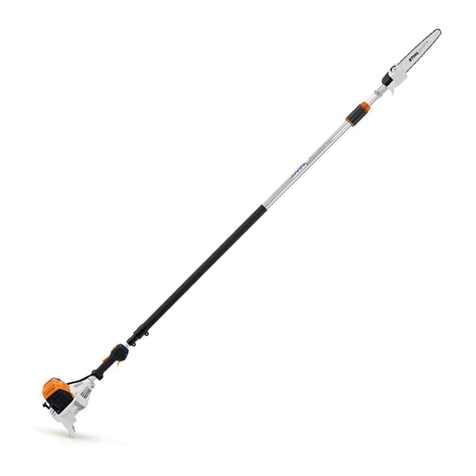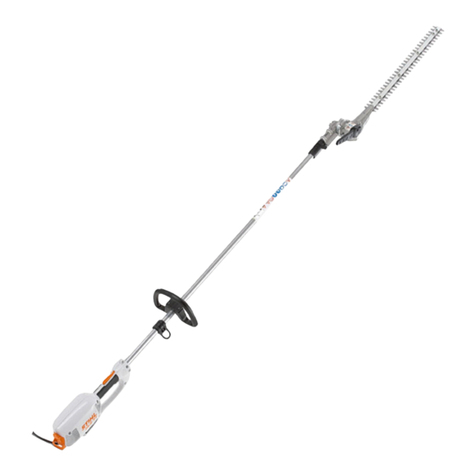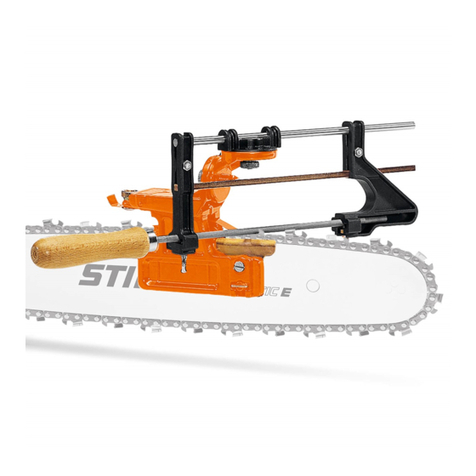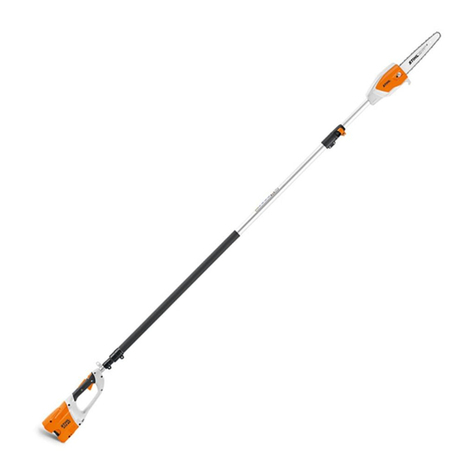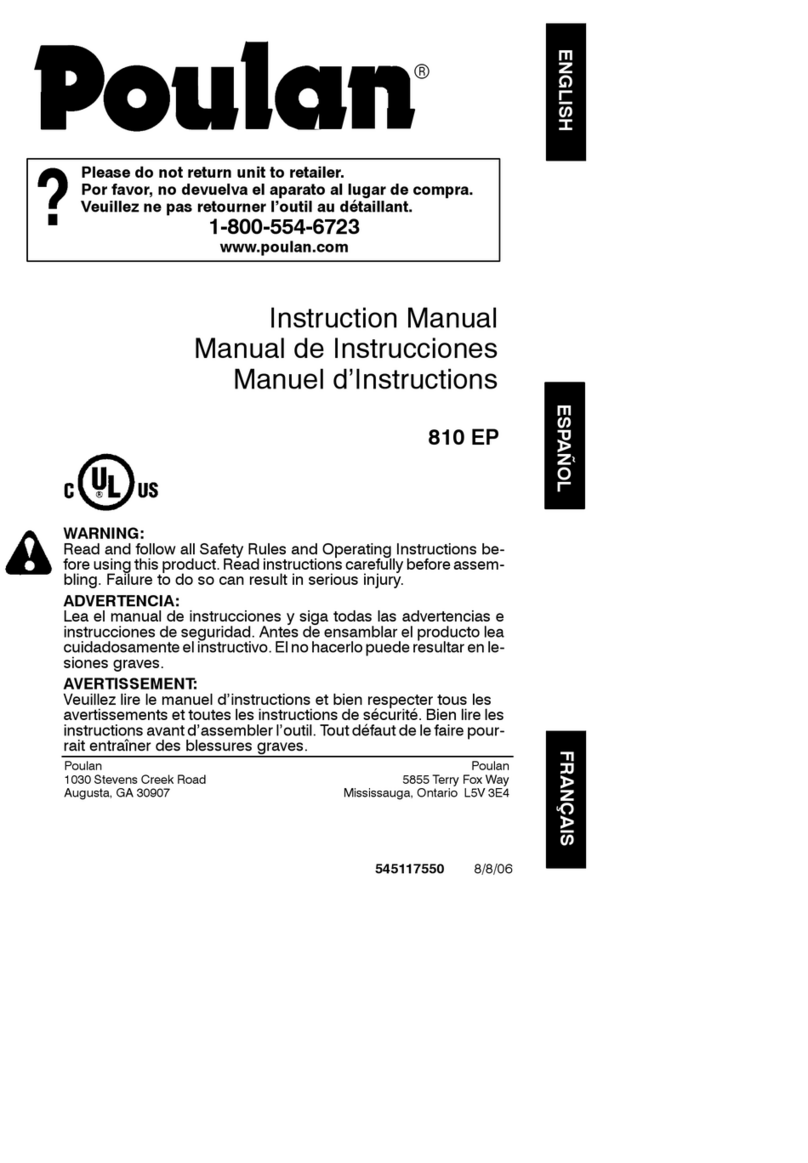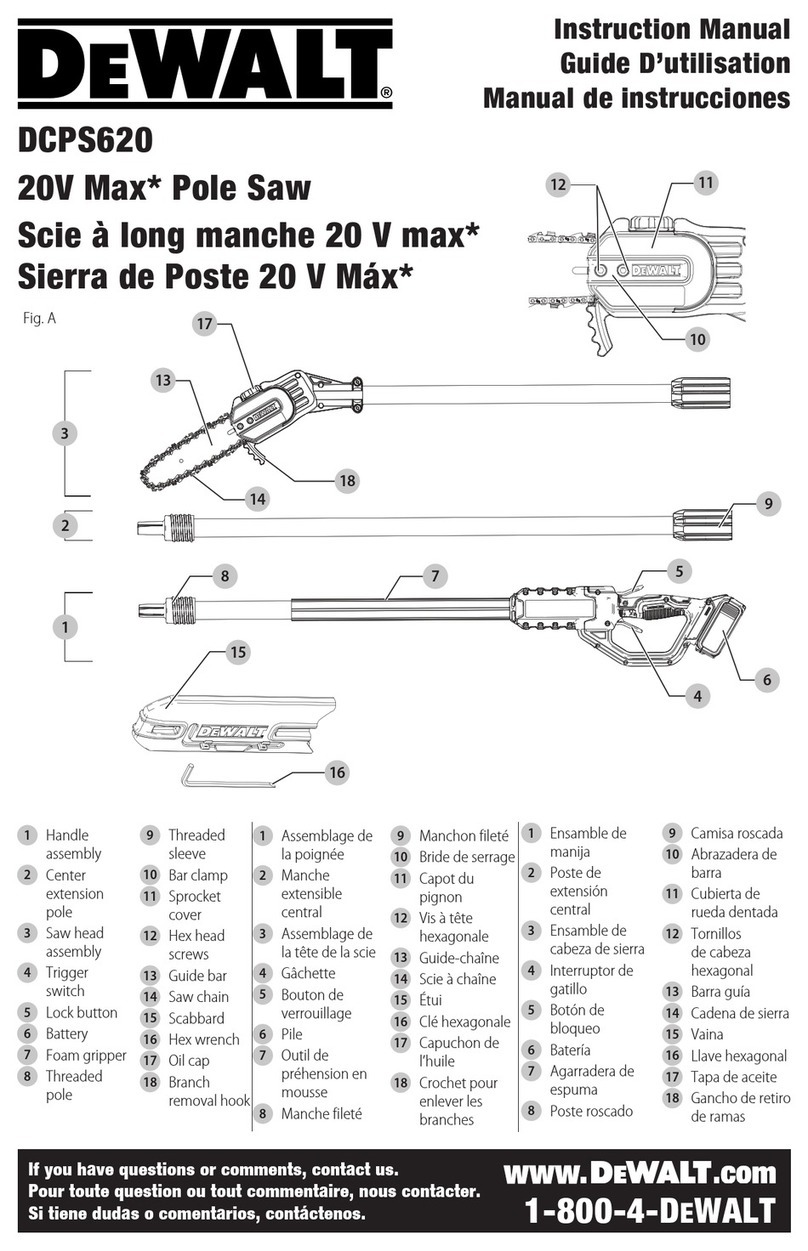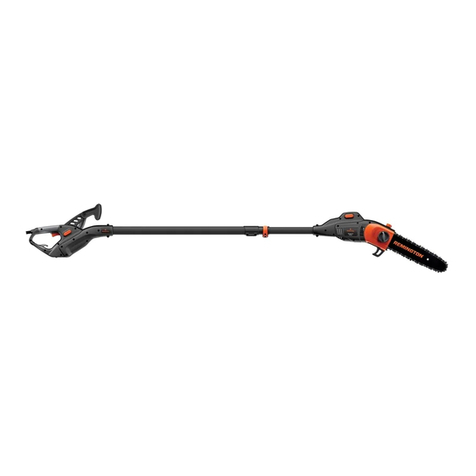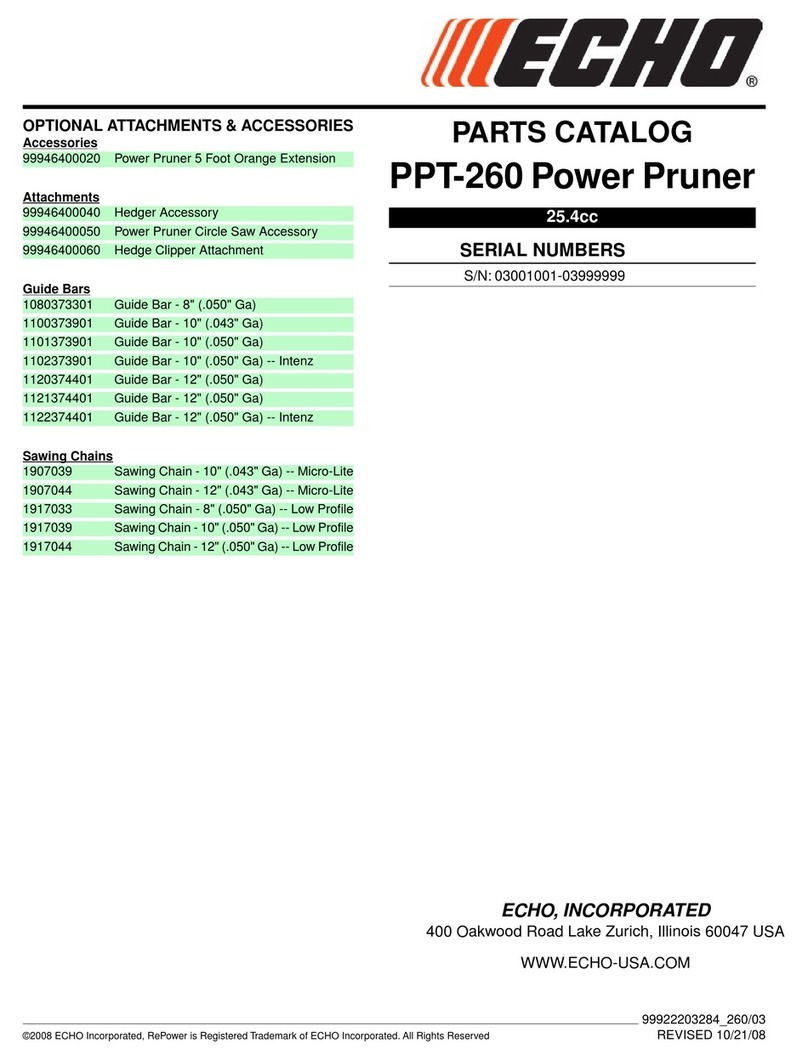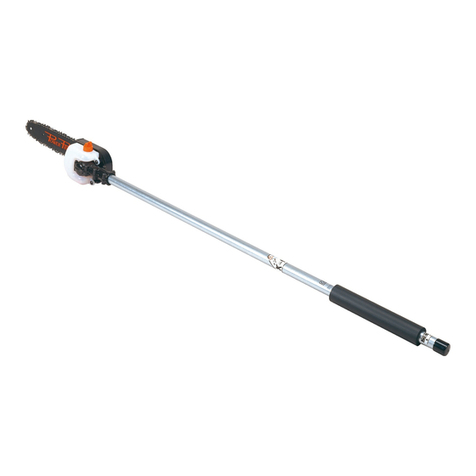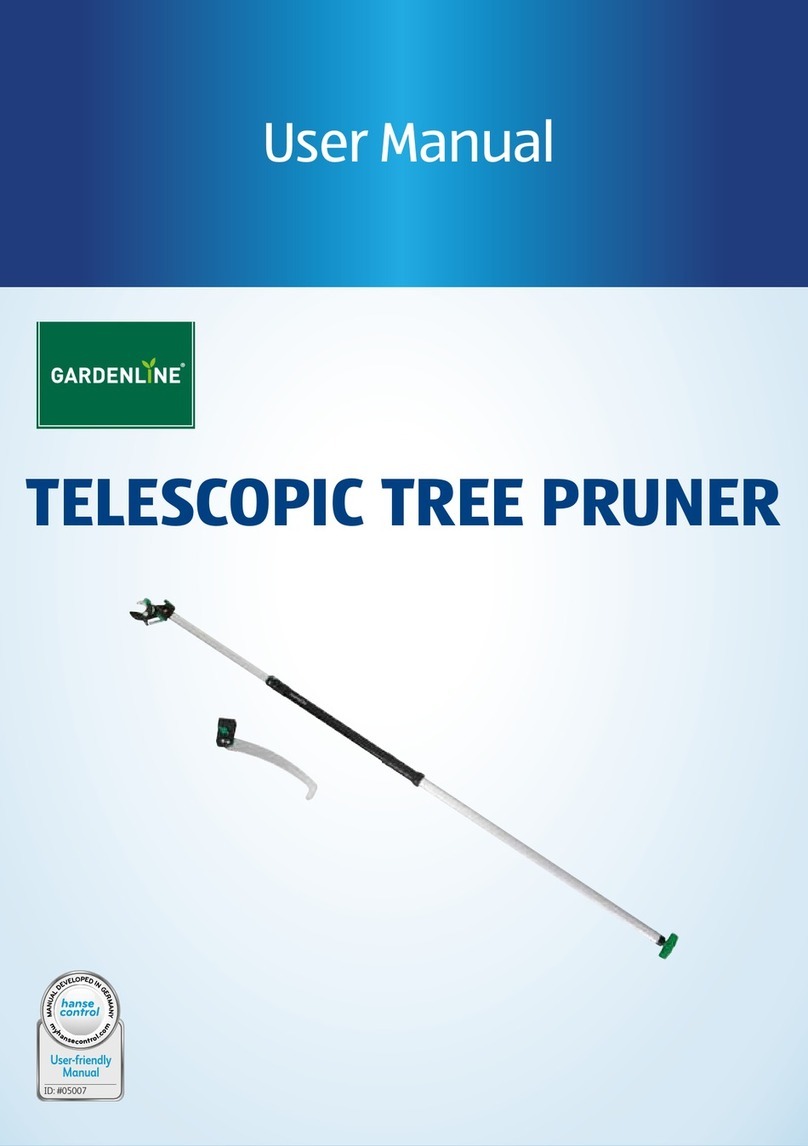
HT 105, HT 134, HT 135
English
7
Before sawing branches, establish an
escape route and remove all obstacles.
When performing the separating cut,
position the bar against the branch near
the hook. This will prevent the power tool
from making jolting movements when
you start the separating cut.
Start the cut with the saw chain at full
throttle.
Always cut with a correctly sharpened,
properly tensioned saw chain – the
depth gauge setting must not be too
large.
Do not operate your power tool in the
starting throttle position – engine speed
cannot be controlled in this position.
Perform cross-cut from the top
downward to avoid the chain pinching in
the cut.
If branches are thick or heavy, make a
relief cut – see "Using the Pole Pruner".
Exercise extreme caution when sawing
branches under tension – Risk of injury!
Always make a relieving cut on the
compression side first and then perform
the bucking cut at the tension side.
Be careful when cutting splintered wood
– Risk of injury from ejected pieces of
wood!
If working on a slope, always stand uphill
or to the side of the branch which is to be
sawn. Watch out for rolling branches.
Note when reaching the end of a cut that
the power tool is no longer supported by
the guide bar in the cut. The user must
bear the weight of the machine – risk of
loss of control!
Always pull the power tool out of the cut
with the saw chain running.
Use the power tool for limbing and
pruning only, not for felling – Risk of
accidents!
Keep the saw chain away from any
foreign objects: Stones, nails, etc. may
be ejected and damage the saw chain.
If a rotating saw chain hits a stone or
another hard object, sparks may be
generated which may ignite easily
flammable materials under certain
conditions. Also dried-out plants and
brushwood are combustible, above all in
hot and dry weather. If there is a risk of
fire, do not use your pole pruner near
easily flammable materials, dry plants or
scrub. It is mandatory that you ask the
responsible forestry office about the
current fire hazard.
Before you leave the machine: Shut the
engine off.
Vibrations
Prolonged use of the power tool may
result in vibration-induced circulation
problems in the hands (whitefinger
disease).
No general recommendation can be
given for the length of usage because it
depends on several factors.
The period of usage is prolonged by:
–Hand protection (wearing warm
gloves)
–Work breaks
The period of usage is shortened by:
–Any personal tendency to suffer
from poor circulation (symptoms:
frequently cold fingers, tingling
sensations).
–Low outside temperatures.
–The force with which the handles
are held (a tight grip restricts
circulation).
Continual and regular users should
monitor closely the condition of their
hands and fingers. If any of the above
symptoms appear (e.g. tingling
sensation in fingers), seek medical
advice.
Maintenance and Repairs
Service the machine regularly. Do not
attempt any maintenance or repair work
not described in the instruction manual.
Have all other work performed by a
servicing dealer.
STIHL recommends that you have
servicing and repair work carried out
exclusively by an authorized STIHL
servicing dealer. STIHL dealers are
regularly given the opportunity to attend
training courses and are supplied with
the necessary technical information.
Only use high-quality replacement parts
in order to avoid the risk of accidents
and damage to the machine. If you have
any questions in this respect, consult a
servicing dealer.



